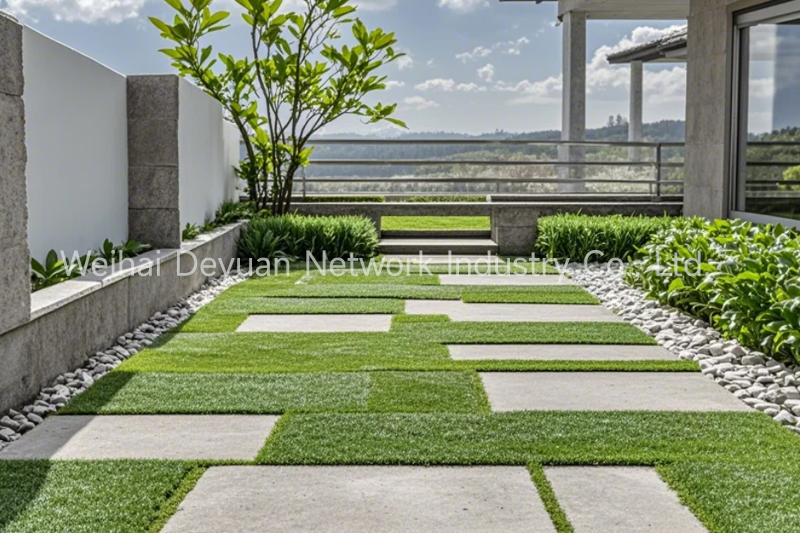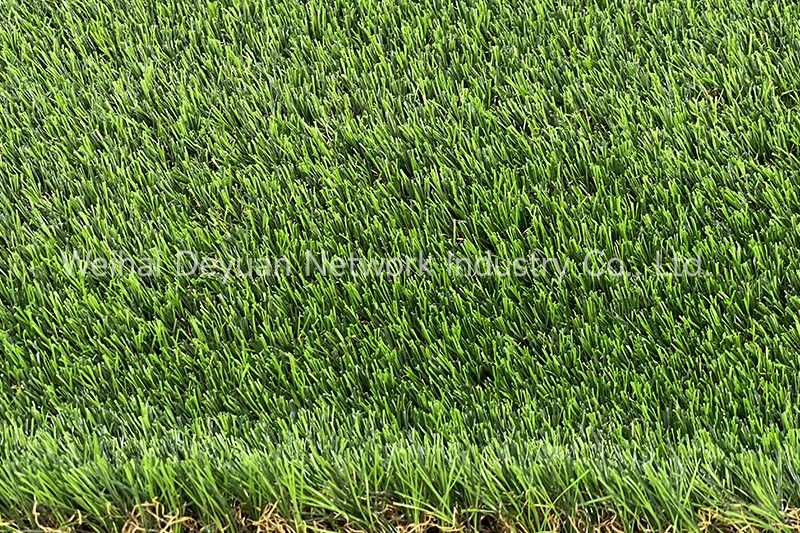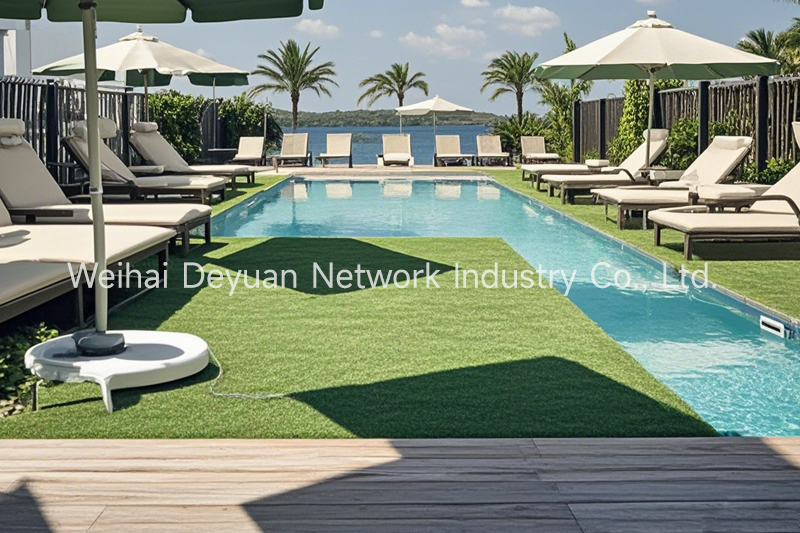Artificial grass is perfect for creating an ultra-low-maintenance front garden that will give your property serious kerb appeal.
Front gardens are often neglected areas as, unlike back gardens, people spend very little time in them. The pay-off for the time you invest in working on a front garden is low.
In addition, the awkward nature of some front garden spaces can make maintenance a very time-consuming task indeed, particularly when that time could be better spent tending to your back garden, where you and your family will likely be spending much more time.
But first impressions are everything and your front garden is one of the first things people see when visiting your home. Even strangers passing by can pass judgement on how your home looks from the street.
Giving your property kerb appeal can add serious value to your home, too, and this makes artificial grass a fantastic investment financially.
However, due to the vast array of different types and styles of artificial grass, choosing the best one for your own individual needs can be a difficult task.
Every artificial grass has its strengths and weaknesses and knowing which one will perform best is sometimes difficult to judge.
In this latest guide, we’re going to be focusing solely on choosing the best artificial grass for a front garden.
A major consideration is that, in the vast majority of cases, front gardens are areas that will receive very little in the way of foot traffic.
Unlike with a back garden, this may mean that choosing the hardest wearing artificial grass could be a waste of money.
Clearly choosing a turf for a front garden is also going to be far different from choosing a grass for a balcony, for instance.
The aim of this article is to answer some of the questions you may have and arm you with the knowledge you’ll need to choose the best artificial grass for your front garden.
What is the best pile height for a front garden?
Choosing your preferred pile height is usually just a matter of taste as there isn’t really a right or wrong when it comes to choosing what is best for a front garden.
Obviously the shorter the pile, the cheaper the artificial turf will be, as you’ll be paying for less plastic.
In our experience, many of our customers choose something between 25-35mm.
A 25mm artificial grass is perfect for those that like the look of freshly cut grass, whereas others prefer the longer look of a 35mm pile.
When choosing the best pile height for your front garden, we would recommend leaning more towards a shorter pile, due to the minimal foot traffic it will receive and the cost savings involved.
But, as we said, pile height should be chosen based on what you think would look most natural in your front garden
What is the best pile density for a front garden?
Within the artificial grass industry, pile density is measured by counting the stitches per square metre.
When choosing the best pile density for a front garden, we recommend you choose a grass with somewhere between 13,000 and 18,000 stitches per square metre.
You can, of course, opt for a denser pile, but for ornamental lawns it’s probably unnecessary. The additional financial cost just isn’t worth it.
You must remember that in the case of an ornamental front lawn you’ll be viewing it from a path or driveway, the road, or inside your house, so you’ll be looking at the pile from three different angles. This is in contrast with, for example, a balcony, where you’d be mainly viewing the fake grass from above. Grass viewed from above needs a dense pile in order to look full and lush. Grass viewed from the side does not.
This means that you can choose a sparser pile than you would for a balcony and it will still have a good appearance.
What is the best fibre material to choose for a front garden?
The plastic fibres of artificial grass can be made from one or a mix of three different types of plastic.
Those are polyethylene, polypropylene and nylon.
Each plastic has its own strengths and weaknesses, with polyethylene usually being considered the best compromise between performance and cost.
Nylon is by far the hardest wearing and most resilient artificial fibre. In fact, it’s up to 40% more resilient than polyethylene and up to 33% stronger.
This makes it ideal for heavy use areas.
But for a front garden, the additional cost of choosing a nylon-based product doesn’t make financial sense as it won’t need to be able to cope with regular use.
For that reason, we recommend you choose a turf made from either polypropylene or polyethylene for your front garden.
How should artificial grass be installed for a front garden?
In much the same way as a normal artificial grass installation.
For low traffic areas, such as a front garden, you certainly won’t be needing to excavate more than 75mm or 3 inches.
This will allow enough for a 50mm sub-base and a 25mm laying course.
If your front lawn is going to receive very little foot traffic even this may be a little excessive.
In firm, well-draining soil, installing a 50mm base consisting solely of granite or limestone dust will likely suffice.
You’ll still need to install a suitable edging capable of retaining the sub-base layers and secure the perimeter of your lawn.
Conclusion
Hopefully you’ll have now realised that choosing an artificial grass for a front garden is quite different from choosing one for a rear garden.
Your typical front garden is for ornamental use and it’s really only there to make the front of your home look attractive. Artificial grass will drastically reduce the maintenance required to keep it in tip-top shape.
There’s little point in buying the hardest wearing artificial grass on the market when it’s going to receive very little in the way of foot traffic.
The purpose of this article was to arm you with the knowledge to make an informed buying decision and we hope that this has helped you to achieve this.
Post time: Jan-08-2025










